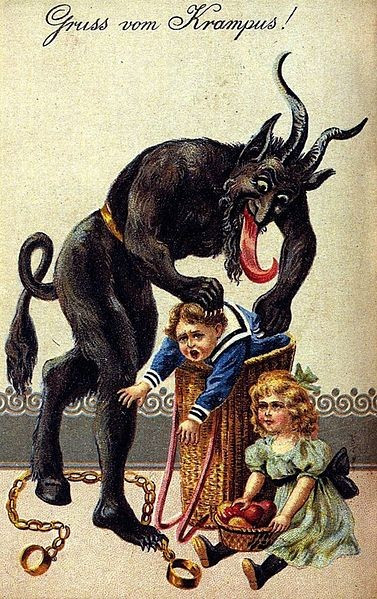St Nicholas' Day: Dark secrets behind the myth of Santa Claus

St Nicholas' Day is celebrated on 6 December across the world in honour of the benign bringer of gifts. But the story behind the saint, who is the model for Santa Claus, has a much darker history peppered with tales of murder, mutilation, cannibalism and infanticide.
In Europe, especially in Germany and Poland, boys dress up as bishops to beg alms for the poor, while in Ukraine, children expect St Nicholas to place a present under their pillows if they have been good throughout the year.

Children who behave badly are punished by having a twig or piece of coal placed beneath their pillow. The tradition differs across countries, so in the Netherlands, Dutch children put out a clog filled with hay and a carrot for St Nicholas' horse.
However, there are dark tales and threats of menace that surround this popular figure. According to a traditional French children's song from the 17<sup>th century, three children are killed and chopped up by a butcher in his shop and stowed away in a large salting tub, with overtones of cannibalism.
St Nicholas revived them and returned them to their families, hence his reputation as a children's protector.
The evil butcher, known as Père Fouettard, is destined to accompany the saint in penance for his sins.
In Belgium and the Netherlands, these helpers are called Zwarte Pieten (Black Pete) who kidnapped all the naughty children and tied them up in sacks. This has caused controversy in recent years, with many regarding the character seen as a racist bogeyman, with Dutch slavery history linked to this tradition.
Devil worship and the cult of St Nicholas is more clearly defined in Germanic folklore. In Austria, Bavaria and Tyrol, the saint is accompanied by Krampus, a demonic-like figure. Krampus punishes children by carrying them off to his lair.
On 5 December, Krampus Night is when drunken young men dress up as hairy devils roaming the streets to terrify children, shaking rusty chains and bells. Krampus' terrifying presence was banned for many years with the Catholic Church forbidding the pagan celebrations, and fascists in the Second World War found Krampus objectionable because they thought it was created by the Social Democrats.

According to Maria Tatar, professor of Germanic folklore and mythology at Harvard University: "These tales are not politically correct. They are full of sex and violence.
"They give us these 'what if' scenarios – what if the most terrible thing that I can imagine happened?"
Who was Saint Nicholas?
Saint Nicholas (15 March 270 – 6 December 343), was also called Nikolaos of Myra, was a historic Christian saint and Greek Bishop of Myra, in Asia Minor (modern-day Demre, Turkey). He has many miracles attributed to him and other titles include Nikolaos the Wonderworker.
Many churches in Europe, Russia and the US claim to possess small relics, such as a tooth or a finger. It is said that in Myra the relics of Saint Nicholas each year exuded a clear watery liquid which smells like rose water, called manna (or myrrh), which is believed by the faithful to possess miraculous powers. A flask of this liquid is extracted from the tomb of Saint Nicholas every year on 6 December by priests.
He is the patron saint of sailors, merchants, archers, repentant thieves, children, brewers, bakers, pawnbrokers and students.
© Copyright IBTimes 2025. All rights reserved.




















